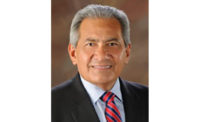From June 28 to July 1, the American Society of Safety Engineers’ annual meeting will be held in San Antonio, Texas. ISHN interviewed Chris Patton, CSP, ASSE’s new president, on the state of the profession. Chris is principal HSE engineer for Covidien, a global healthcare company with 41,000 employees and sales of nearly $10 billion.
Describe your primary responsibilities as principal HSE engineer for Covidien.
I support the Imaging and Pharmaceutical Business Unit for North America. This includes multiple manufacturing, research and development, sales and service, distribution, and administrative facilities. I provide SH&E support and guidance to assist our sites in ensuring compliance with regulations and company standards while developing world class management systems.
You talked in your candidate’s platform of the need for EHS pros to think globally. Do all ASSE members, all EHS pros, need to think globally? Or only the ones with global responsibilities? We have found through reader research that pros in smaller facilities see no need to keep up with international regs. They are too busy. Your thoughts?
SH&E professionals conduct their work in a wide range of businesses with varying scopes. Some have international responsibility, some do not. In my platform statement for Senior Vice-President, I noted that our profession and our society are expanding globally. This brings with it many opportunities as well as many challenges. ASSE has members that live and/or practice in many countries outside the United States and we must be prepared to meet those members’ needs. In addition to geographic differences, our membership is diverse in many other ways. It is crucial for us to pay attention to these changing conditions which influence how we do business, how we communicate, learn, network and serve our members. ASSE is focused on achieving its vision of being a global champion of the safety, health and environmental professional, a global leader of the profession and a premier resource for those engaged in protecting people, property, and the environment. Being global is more than knowing the laws and regulations of other countries. It is finding better ways to reach out and help our members around the globe do their jobs.
You mentioned in your ASSE candidate’s platform that the business world is just beginning to understand the EHS pro’s purpose. Why has it taken almost 100 years of ASSE’s existence for this to occur? Why the delay?
I don’t think of it as a delay, but rather a slow evolution. Our own understanding of our profession has changed over the last 100 years, and we are more integrated into our businesses than ever before.
I haven’t looked at all of our historical efforts, but I can tell you that ASSE is working hard to figure out what actions we can take now to promote the SH&E profession. In 2007, ASSE embarked on a project to look at the current perception of the value of the safety professional in the workplace and how safety professionals could better meet the needs and expectations of the management team. The first phase of the project consisted of an ASSE member survey and one-on-one interviews with corporate managers, who hire, manage or work with safety professionals, but were not themselves safety professionals. Supplementing these findings was information from a related literature search and a review of “value” studies performed by other professional associations. Our plan has three areas of focus: repositioning safety, repositioning the safety professional, and preparing the safety professional to be the value-add employee. The plan identifies 10 goals and more than 30 specific actions to be completed by multiple teams of members and ASSE staff. The intent is to have a comprehensive, action-oriented strategy aimed at promoting and enhancing the value of the safety professional. The plan was published in an article on Professional Affairs in the November 2008 Professional Safety journal.
Are you concerned that the economic downturn is causing a “dumbing down” of the EHS profession? I’ve talked to several pros discouraged that most EHS job openings seem to be for low salary, low experience positions? This could possibly be due to cost-cutting, or a belief that facility safety is now under control and in a maintenance mode. Your thoughts?
Are employers looking to save money? Absolutely. Are they seeking lower skilled SH&E professionals? I don’t believe that is the case. I recently went to ASSE’s NexStep job page and looked to see what qualifications employers were stipulating. Of the first 10 jobs I looked at, all required a college degree and some experience. The vast majority were seeking someone with a professional certification. That tells me that employers are looking for skilled professionals.
In fact, what I have heard anecdotally is that because of job layoffs, the market is more competitive. This means more highly qualified candidates are applying for jobs. This makes it harder for entry level candidates to be placed.
Layoffs and cutbacks have affected many of our members. There are SH&E professionals losing jobs due to reductions in force and plant closures. ASSE has been trying to deliver the message to employers that SH&E professionals are not expendable. Safety should not be the place to look for reductions. In fact, a company can have significant competitive advantage by continuing to invest in SH&E during the hard times. This will establish their company image so that when the economy does improve, they will be able to recover quickly and retain the best candidates for open positions. In addition, an investment in safety has a positive impact on the bottom line. Letting these systems fall apart means losses in efficiency, productivity, and profitability. Therefore, maintaining these systems during a struggling economy may be critical to survival.
On May 20, ASSE sponsored a webinar on “management-based safety.” There is a good bit of talk how EHS pros need to hone their management systems skills. But hasn’t safety always been about managing a program? The term “safety management” has been around forever, it seems. Your thoughts?
Managing safety ispartly about managing the systems in a program, and this is where the SH&E professional’s technical skills are utilized. But the more complex part of our jobs is managing people and their behaviors. It is also about affecting the beliefs of the people in your organization so that safety becomes a strongly held value.
The webinar ASSE sponsored focused on developing skills related to safety culture change concepts, utilizing line management and supervision as the catalyst for change, and integrating safety management into the responsibilities of managers and supervisors so that safety is managed like any other business function.
In order for a safety manager to be successful today, they must understand how they contribute to their organization, and how to sell that value-add proposition to their employer. This means understanding the business and the language that goes along with that. It means integrating safety into everyone’s roles and responsibilities so that it is viewed as a value, not as a task.
According to our reader research, the majority of EHS pros do not want to see a more activist OSHA, issuing more standards than pros have time to handle. Almost 40 years ago, the profession saw OSHA as Our Savior Has Arrived. Now, many pros have their facilities “beyond compliance” and are disengaged and disinterested in OSHA activities. Is OSHA relevant to today’s sophisticated professional who is thinking management systems, thinking risk, thinking sustainability, thinking globally — all things OSHA has nothing to do with. Your thoughts?
For the sophisticated professional who is thinking management systems, thinking risk, sustainability, etc., and who works for a company that provides the necessary resources and who “gets it”, compliance becomes nearly irrelevant. However, that does not mean that OSHA is not a critical part of employee safety in this country. They are here to ensure that employers perform above a certain level. Unfortunately, that is still a necessity.
ASSE will continue our active pursuit of practical, efficient, and cost effective safety legislation and regulations. We support adequate funding of OSHA, and believe that OSHA can play many roles, not just as regulators. They can help sell safety, they can build partnerships, and they can teach and share information.
For young EHS pros, say under age 30, what skills will they need to ensure long, successful careers?
The profession is changing. In general, entry level practitioners are coming from college level safety programs. They have interned and developed some of the basic skills necessary to help them get a running start. They have been members of their ASSE student sections and attended conferences such as the ASSE Future Safety Leaders Conference to gain a better understanding of what they will be facing when they enter employment. I have had the pleasure of meeting hundreds of college students preparing to enter into SH&E. They are smart, professional workers who enter into this profession knowing it is what they want to do. It will be interesting to see where they take our profession over the next decade.
ASSE has supported the position of raising the bar on the safety profession. By increasing the educational and experience requirements for being a professional member, by promoting professional certifications, by supporting graduate and doctoral degree programs in universities, and by providing certificate programs and professional development for current professionals, we strive to raise the skill level of the entire profession. I believe this is providing results with the current generation of “young” safety professionals.
In my opinion, the next step for these folks is to seek a better understanding of the business world. This will help them tremendously as they begin to move into more senior level positions in their organizations. Imagine how the profession would benefit if some of these professionals began moving into senior operational management positions within their companies.
For mid-career EHS pros facing uncertainty, what skills will they need to ensure job security, or continuing employment prospects?
Again, if we want to successfully integrate safety, we have to understand the business world, so those skills become essential as we move up to more senior positions.
The young safety professionals are a step ahead of us in one aspect. Technology is changing the way we communicate. You may laugh about texting, tweeting, or Facebooking, but these may be the networking and communication tools of the future. What used to be limiting factors such as time, distance, and travel now become nearly irrelevant when you talk about networking, professional development, sharing of ideas, collaborating and creating a community. These tools may very well become necessary in order to be effective in the future.
Where will the future EHS jobs be? What industries? What will sustain and drive the growth of the EHS profession?
I would hope that they would be everywhere. If the profession is successful, it will find a home in the life of every worker. That said, businesses are always looking to do more with less. The more skills a candidate brings to the table, the more value they provide to their employer. I can’t count the number of times I hear the terms globalization, sustainability, and operational excellence in a day. Perhaps we should pay attention to that?
ASSE wants corporate embrace of the value add of SH&E programs, and believes that this will drive growth. ASSE will be actively pursuing this objective along with promoting the value add of the safety profession and professionals in influencing and supporting these increased benefits from the pursuit of excellence in SH&E.
ISHN full text interview with new ASSE President Chris Patton, CSP


